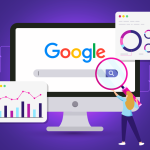On-Page SEO
Understanding On-Page SEO
On-Page SEO is more than just sprinkling a few keywords onto your webpage. It’s the art and science of optimizing each element within your site to achieve higher search engine rankings and provide a stellar user experience. Think of it like setting up a storefront on a busy street—your layout, signs, and arrangement of products all matter if you want customers to come in and stay a while. Similarly, in the digital world, search engines and visitors both appreciate a well-structured, engaging site. If you nail your On-Page SEO, you can expect better visibility, more traffic, and ultimately, more conversions.
Table of contents
- Understanding On-Page SEO
- Why On-Page SEO Matters
- Key On-Page SEO Elements
- On-Page SEO: Content Optimization Tactics
- On-Page SEO: Image Optimization
- Importance of Image Compression
- Internal Linking Strategies
- On-Page SEO: Mobile Optimization
- On-Page SEO: Page Speed Essentials
- Readability and Engagement
- On-Page SEO: Structured Data Markup
- On-Page SEO: Building a Trustworthy Site
- User Behavior Metrics
- Keeping Content Fresh
- Common On-Page SEO Mistakes
- Conclusion
- Frequently Asked Questions (FAQs)

Why On-Page SEO Matters
In a world where everyone is hustling for the top spot in search results, On-Page SEO can be your golden ticket. It ensures that your site doesn’t just get found—it gets clicked on and explored. Here’s why it’s such a big deal:
Enhancing User Experience
SEO isn’t just about pleasing search engines; it’s also about catering to human visitors. By optimizing elements like page speed, mobile responsiveness, and readability, you’re directly impacting how users feel when they land on your site. A smooth experience encourages them to stay longer, explore more pages, and come back for future visits.
Signaling Relevance to Search Engines
Search engines deploy bots that crawl your website, analyzing its content and structure. If your site’s keywords, headings, and meta tags align with what users are searching for, search engines reward you with higher rankings. Proper On-Page SEO ensures these bots know exactly what your page is about, so you show up for the right search queries.
Key On-Page SEO Elements
Optimizing your website involves a variety of elements that collectively impact your rankings and user engagement. Let’s break down the most critical components:
On-Page SEO: Optimized Title Tags
The title tag is like your website’s business card—often the first thing potential visitors see in search results. A title tag should be concise, informative, and include your primary keyword. Aim for around 50-60 characters. For example, if you own a bakery and want to target “gluten-free cupcakes,” a good title could be: “Delicious Gluten-Free Cupcakes | [Your Bakery Name].”
On-Page SEO: Compelling Meta Descriptions
Below the title tag in search results lies the meta description—a brief snippet that offers a snapshot of your page’s content. While it doesn’t directly influence rankings, it plays a vital role in click-through rates. Write it like an invitation, incorporating relevant keywords and an enticing hook. For example: “Craving a guilt-free sweet treat? Discover our freshly baked gluten-free cupcakes that taste as good as they look.”
Proper Heading Structure (H1, H2, H3)
Headings serve as signposts guiding visitors through your content. Your H1 usually states the main topic, while H2, H3, and so forth break down subtopics. This structure helps search engines quickly identify the theme of your content. Think of headings as chapters in a book—easy to navigate and pleasing to both human readers and search bots.
Clean URL Structure
A well-structured, user-friendly URL is short, descriptive, and includes relevant keywords. Instead of “www.example.com/post/12345,” opt for “www.example.com/gluten-free-cupcakes.” This minor tweak can boost your search engine visibility and user trust—nobody likes messy URLs, right?
On-Page SEO: Content Optimization Tactics
Content is often called “king” for a reason. It’s the heart of your website and one of the strongest signals to search engines about what you offer.
Performing Keyword Research
Before writing or optimizing your content, conduct thorough keyword research. This helps you understand what words or phrases your target audience is typing into search engines. Tools like Google Keyword Planner or Ahrefs can be your best friends for discovering popular keywords, search volume, and competition levels.
Keyword Placement
Once you’ve identified your primary and secondary keywords, sprinkle them wisely throughout your content. That means placing them in your title tag, within the first 100 words of your article, in subheadings, and naturally throughout the body. The goal? Ensure search engines and users understand your topic without overdoing it.
Striking the Right Keyword Density
Too many keywords, and you’re guilty of keyword stuffing—a bad practice that can get you penalized by search engines. Too few, and your page might not rank. Aim for a natural ratio—typically around 1-2% density for major keywords—while focusing on creating valuable content that reads like a conversation, not a robot.
On-Page SEO: Image Optimization
Images can transform a dull wall of text into an engaging visual experience. But if they aren’t optimized, they can slow down your site and harm your SEO efforts.
Crafting Alt Text
Alt text (alternative text) describes your image to both screen readers and search engines. This is particularly crucial for accessibility, allowing visually impaired users to understand your content. It’s also an extra SEO opportunity—use relevant keywords in the alt text, but only if it makes sense.
File Names that Work
Before uploading an image, rename the file to something descriptive like “gluten-free-chocolate-cupcake.jpg” instead of “IMG_1234.jpg.” This tiny step can provide an additional clue about your content, helping search engines categorize your images more accurately.
Importance of Image Compression
Large image files can seriously slow down your site. Use tools like TinyPNG or CompressJPEG to reduce file sizes without sacrificing quality. A faster site equals happier users and better rankings—who doesn’t want that?
Internal Linking Strategies
Internal links connect one page of your site to another. They guide readers (and search engines) to additional resources, establishing a clear hierarchy of information.
Benefits of Internal Linking
Imagine walking through a library: signposts direct you to related books on the same subject. Internal links work the same way, helping users navigate your website. Additionally, they distribute link equity (sometimes called “authority” or “PageRank”) across various pages, boosting the visibility and rankings of your content.
Best Practices for Internal Linking
- Use Descriptive Anchor Text: Instead of “click here,” use relevant keywords that hint at the page’s topic.
- Link Deep: Avoid linking only to your homepage. Instead, direct users to inner pages to keep them engaged.
- Don’t Overdo It: Overloading a page with too many links can look spammy. Keep it balanced and user-focused.
On-Page SEO: Mobile Optimization
Smartphones and tablets have become our digital companions, so your website must be ready to greet users on any device.
Embracing Responsive Design
Responsive design automatically adjusts your site’s layout based on screen size. This ensures your website looks and functions well whether someone is on a 27-inch desktop monitor or a 5-inch smartphone screen. Not only does this boost user satisfaction, but Google has also moved to mobile-first indexing, meaning they predominantly use the mobile version of a site for ranking and indexing. If your site isn’t optimized for mobile, you’re probably missing out on a large chunk of potential traffic.
On-Page SEO: Page Speed Essentials
Page speed is the Ferrari of On-Page SEO metrics: the faster, the better. If your site crawls at a snail’s pace, users will leave before they even see what you have to offer.
Why Speed is Critical
In our hyper-busy world, attention spans are short. A slow-loading page can lead to higher bounce rates and lower conversions. Plus, Google has openly stated that page speed is a ranking factor. A speedy site isn’t just a nice bonus; it’s essential.
Tools and Tips to Improve Load Times
- Use a Content Delivery Network (CDN): CDNs distribute your site’s assets across multiple servers worldwide, reducing latency.
- Minify CSS, JavaScript, and HTML: Removing unnecessary characters and spacing can reduce file sizes and speed up rendering.
- Leverage Browser Caching: This technique stores portions of your website on users’ devices, so returning visitors enjoy faster load times.
Readability and Engagement
No one likes wrestling with large blocks of text. Break it up, simplify your language, and keep your audience interested.
Using Bullet Points and Short Paragraphs
Bullets, lists, and short paragraphs make content more digestible. It’s like giving your readers bite-sized snacks instead of a massive, hard-to-swallow meal. This approach keeps people on your page longer, which signals to search engines that your content is valuable.
The Value of White Space
White space (or negative space) is the empty area around text and images. It gives your content room to breathe, improving overall readability. Think of it like the margins in a book—without them, everything feels cramped and overwhelming.
On-Page SEO: Structured Data Markup
Structured data markup is a way to wrap your content in specific tags so search engines can better understand it. This can lead to rich snippets or special search features that stand out in search results.
Gaining Visibility with Rich Snippets
Rich snippets display extra details beneath your title, like ratings, pricing, or events. These enhanced results can significantly increase your click-through rate. While implementing structured data may require some technical know-how, various plugins and tools simplify the process.
On-Page SEO: Building a Trustworthy Site
Trust is the cornerstone of any successful website. If users and search engines see you as credible, they’re more likely to engage with your content and even recommend it to others.
On-Page SEO: SSL Certificates
SSL (Secure Sockets Layer) encrypts data between the server and the user, making sure personal information stays secure. Sites with SSL display “https” in the URL and often a padlock icon in the browser bar. Google has stated that SSL is a ranking signal, so it’s a win-win for both security and SEO.
Policy Pages
Pages like Privacy Policy, Terms of Service, and any other legal disclaimers build user trust and transparency. Not having these can sometimes make users question your site’s legitimacy.
User Behavior Metrics
User behavior signals like bounce rate, time on site, and pages per session tell search engines if visitors find your content valuable.
Bounce Rate
This is the percentage of visitors who land on your site and leave without taking any further action. A high bounce rate can indicate that your content or user experience isn’t meeting visitor expectations. By improving page layout, speed, and content quality, you can encourage people to stick around.
Time on Site
The longer a user stays, the more engaged they likely are. Search engines see this as a sign that your content is relevant and worth ranking higher. Embed videos, infographics, and interactive elements to boost engagement time.
Keeping Content Fresh
Stagnant websites can quickly fall behind in the search engine game. Updating your content shows both users and search engines that you’re active and relevant.
Scheduling Content Audits
Every few months, review your old posts and pages. Ask yourself: “Is this information still accurate? Are there better keywords to target now? Can I add new statistics or examples?” Refreshing your content can breathe new life into pages that have lost their initial ranking power.
Common On-Page SEO Mistakes
Even seasoned marketers can slip up. Recognizing typical mistakes is the first step in avoiding them.
Keyword Stuffing
Cramming your content full of keywords may have worked a decade ago, but modern search engines frown on it. You’re more likely to get penalized than rewarded. Instead, keep it natural and meaningful.
Overlooking Mobile Users
Failing to optimize for mobile is a grave error in today’s smartphone-driven world. From text size to navigational elements, everything should be adapted for smaller screens. If your site is unwieldy on mobile devices, you can kiss potential customers—and higher rankings—goodbye.
Conclusion
On-Page SEO might feel like juggling many different balls at once, but once you master the basics—keyword optimization, technical checks, and user experience enhancements—you’ll be poised for success. Remember, On-Page SEO isn’t just about search engines. It’s about crafting an online presence that’s intuitive, helpful, and engaging for real people. By continuously polishing these elements—through fresh content updates, improved site speed, and careful keyword placement—you’re setting up your site to shine in search results and in visitors’ eyes. The more you optimize, the more your site becomes an irresistible magnet for traffic, leads, and loyal fans.
Frequently Asked Questions (FAQs)
It depends on your content schedule and industry. As a rule of thumb, review your key pages and keywords every quarter to ensure your content remains up-to-date and relevant.
While meta descriptions don’t directly affect your ranking, an enticing description boosts your click-through rate, which can indirectly influence your rankings. Aim for 150-160 characters for best results.
You should include your primary keyword in the H1 tag, but you don’t need to stuff it with multiple keywords. Your heading should read naturally and give a clear idea of the topic.
Yes, linking to reputable external sources can boost your site’s credibility. Search engines see outbound links as an indication that you’re providing valuable references to users.
Google’s Mobile-Friendly Test tool is a quick way to find out. It offers a snapshot of how your site appears on mobile devices and provides recommendations for improvement.







